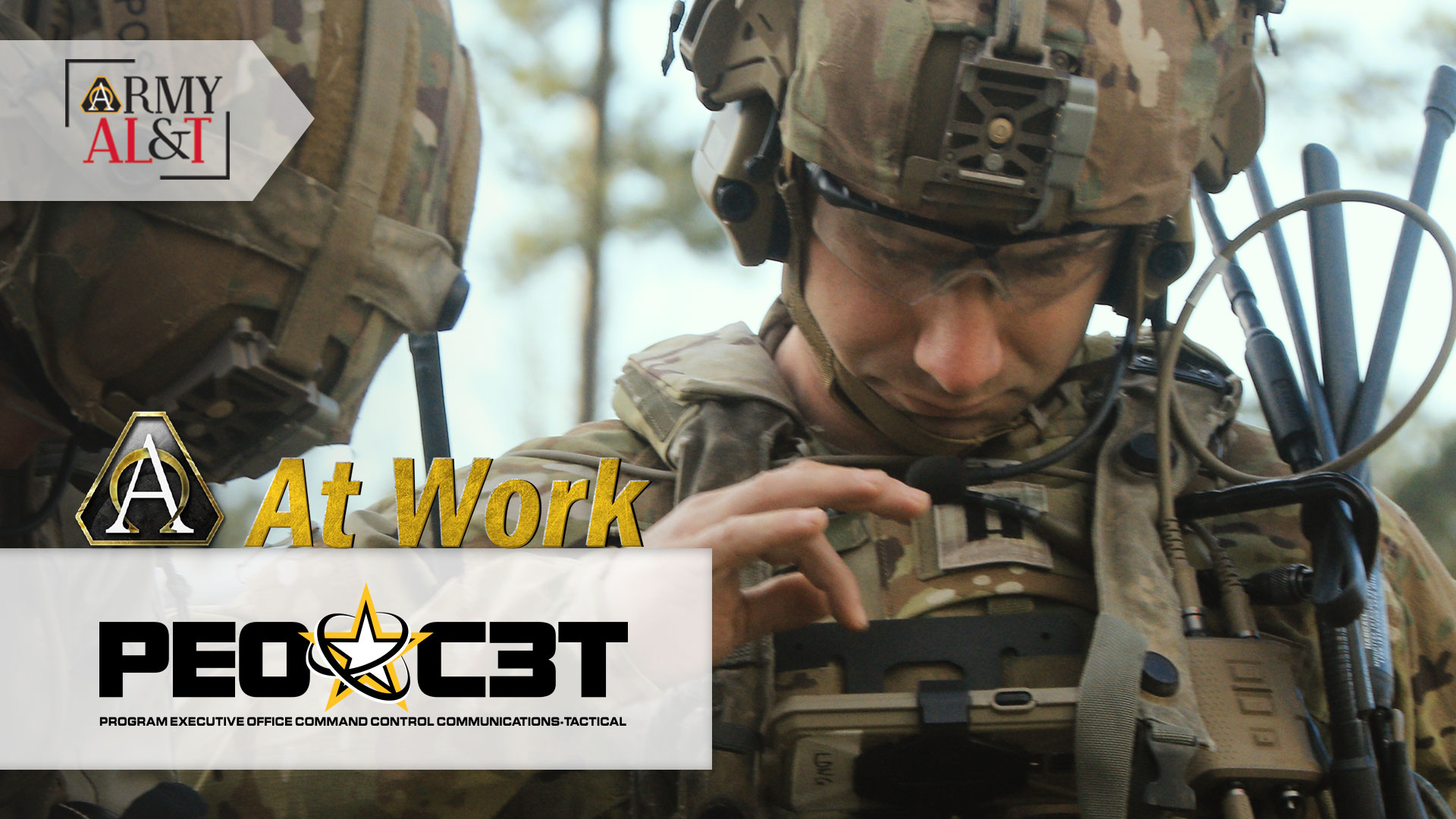
PEO C3T is all about how Soldiers communicate—the satellite terminals that send internet and phone signals to the command post, radios, the network that Soldiers connect to in the field, mission command software and apps. PEO C3T’s goal is to deliver a network that lets Soldiers dominate across all domains. The work’s already in progress, with a target end date in 2028.
But the “win in 2028” network isn’t in a lab somewhere under development. Pieces of it are in the field already, being tested and used. The approach is incremental: add something new, let Soldiers test it (the 1-508th Parachute Regiment of the 82nd Airborne just tested a new combination of network components, some commercial, some government), fix, repeat.
“In contrast to other Army programs, where somebody that we’re not even interacting with decides what we need and pushes it down, the ability to work closely with the developers of the software and hardware has been great,” said Capt. Matthew Risenmay, higher headquarters company commander for the 1-508th Parachute Infantry Regiment, 82nd Airborne Division. “If you don’t have contact with the people that are developing it, you run into problems and you have to deal with the problems for a long time.”
Q: What should we know about PEO C3T?
PEO C3T is building a network that is…
- Expeditionary, to allow commanders to promptly deploy anywhere and conduct operations upon arrival.
- Mobile, so that commanders can command from the plane, from the tactical operations center, or while fighting alongside their troops.
- Hardened by cyber and electronic warfare capabilities and by offering multiple communications pathways to make it harder for adversaries to identify how Soldiers are sharing data.
- Simple, so that any Soldier, not just network experts, can communicate using radios and other devices.
Q: Where does PEO C3T fit into the bigger picture?
The Army Network Cross-Functional Team identifies capability gaps—what Soldiers need from the Army network—and then conducts assessments, user experimentations and technical demonstrations to find potential ways to fill them. Maj. Gen. Peter A. Gallagher, director of the Army Network Cross-Functional Team, described the work: “The overall network strategy is to have a network that’s flat, fast, mobile and protected.”
Then PEO C3T runs the baton from “idea” to “product in the field”: it takes that list of potential solutions, and partners with research and development (like the U.S. Army Communications-Electronics Research, Development and Engineering Center) and testing (the U.S. Army Test and Evaluation Command) organizations to develop and acquire the ones that work best.
Q: What have you fielded lately?
Security force assistance brigades in Afghanistan recently got PEO C3T’s newest effort, which is being called the Integrated Tactical Network: not a new product, but a new combination of the Army’s current tactical network environment (radios, applications, devices and network transport) with new commercial components (radios, gateways, applications and cellular services) and transport capabilities so Soldiers can communicate in areas with limited or disabled bandwidth.
The other key ingredient: It’s unclassified. Most Soldiers conducting operations in tactical settings aren’t talking about classified information. But until now, the networks they used to communicate had to be able to handle classified material—which meant more regulatory boxes to check and more security training. The Integrated Tactical Network drops those requirements.
“This isn’t a new network. We’re not replacing anything. What we’re doing is we’re basically taking a program of record and we’re looking at injecting commercial off-the-shelf items to see where we can enhance or improve our capabilities,” said Lt. Col. Brandon Baer, product manager for Helicopter and Multi Mission Radios.
Q: What’s been the PEO’s biggest success?
Integrating commercial off-the-shelf products into the Army’s network. “It gives us an opportunity to keep up with industry and tweak things as we go, with user feedback, and also inject capabilities depending on what the unit has [and] what the unit’s missions are,” according to Lt. Col. Brandon Baer.
Q: Biggest challenge? “Finding ways to make the network more flexible to meet current and future operations. We are currently examining how we can manage the boundaries within our secure network to give us more flexibility at the tactical edge. We’re also looking at advanced networking waveforms, which will allow us to conduct a mobile ad-hoc network for our battalion formations that will operate in a variety of situations,” said Kathryn Bailey, PEO C3T Public Affairs.
For more information, contact the PEO C3T Public Affairs Office at https://peoc3t.army.mil/c3t/contact-us.php.
This article is published in the April-June 2019 issue of Army AL&T magazine.
Subscribe to Army AL&T News – the premier online news source for the Army Acquisition Workforce.
![]() Subscribe
Subscribe







